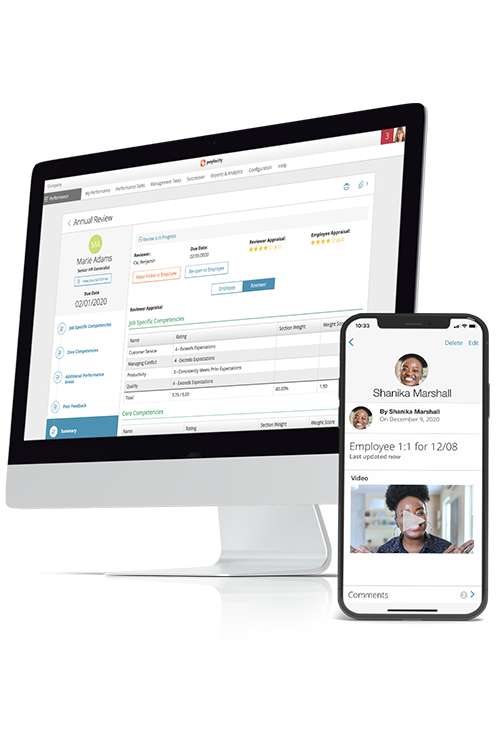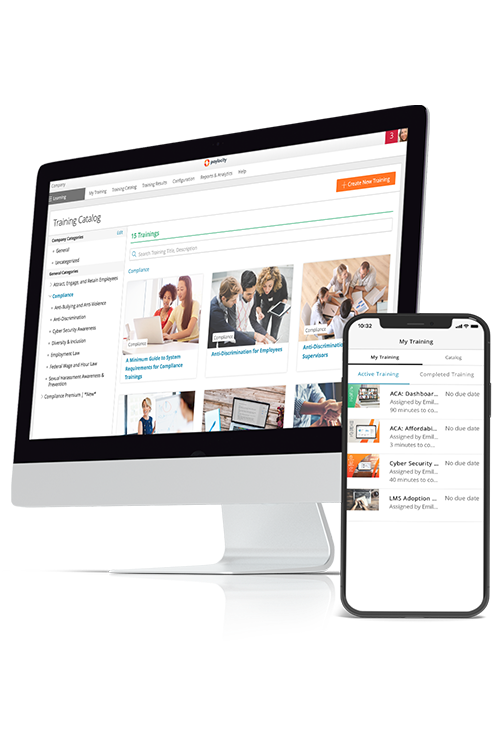Phase 3: Determining the Right Framework for Your Org
Upskilling and reskilling efforts are fueled by the need to innovate and compete. HR knows a well-trained workforce is key to building a culture of agility, and executive leadership will want to see how these initiatives pay off in terms of productivity and profitability.
How you build your leadership program depends on your desired outcomes, which you’ve now diligently aligned with strategic business goals. Let’s look at some examples of leadership development frameworks and scenarios where they might apply.
Vision and mission: Your organization is growing quickly, and subsequently you have a lot of first-time managers. What training and tools will help them communicate your vision and mission consistently and model your values?
Program goals: You’ve identified specific program goals based on your skills gap analysis. For example, mid-level leaders are charged with speeding innovation but lack necessary AI skills.
Leadership pipeline: You have a large workforce population about to retire. Do you have emerging leaders ready to take the reins? What training can you put in place now to help them grow into those roles?
Succession planning: The time for succession planning is before a leader in a critical position leaves the company. Whether a departure is expected or unexpected, are others prepared to step into the vacancy when needed?
Cross-functional approach: As your organization grows and matures, a cross-functional approach to leadership may become more important based on your client load to achieve consistent customer service across channels.
There’s freedom within all these frameworks to address both the core components leaders at every level should have and the specific skills that will make them more effective in their particular role.
What Does a Leadership Program Look Like?
A leadership development program can take many forms, which of course require various degrees of commitment and resources. Again, returning to your goals, what types of learning experiences will be most effective?
Some approaches to consider include:
- Structured coursework (in person, online, or hybrid)
- Mentoring
- Job rotations
- Stretch assignments
- Real-world problem solving
- Shadowing senior leaders
Effective programs target leaders with similar needs and incorporate multiple learning approaches. For example, first-time managers may need foundational training initially but may also benefit from 1:1 mentoring over an extended period. High-potential candidates for advancement could develop their leadership and communication skills working with a group to solve a real-world problem.
Keep in mind, it takes time to move the needle on some key performance indicators, like retention impact or promotion rates. Using surveys to measure improvements in employee satisfaction and tracking course completions through an LMS will help you score some early wins.
Phase 4: Implementation and Beyond
You thought there were only three phases, but there’s always a Phase 4!
As you implement leadership programs and gather feedback, you’ll find ways to refine them over time. Keeping that feedback loop open is critical, and making the most of your data insights will keep you on a path of continuous improvement. As you review your program KPIs, recognize accomplishments and celebrate your wins!
You’ll also have to update programs or create new ones to address advances in technology and shifts in the labor market. Conducting a skills gap analysis annually is a proactive way to keep leadership curriculum relevant.
Your workforce evolves, so the methodologies you use to facilitate learning may need to evolve, too. At some point, you may need to look externally for coursework or training. Technologies like learning management systems, virtual collaboration tools, and AI can elevate your leadership development to the next level.
But don’t forget about the many free resources available, including our HR Mixtape podcast and monthly webinars!






